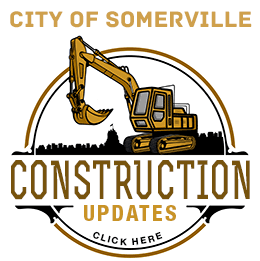
By Joseph A. Curtatone
(The opinions and views expressed in the commentaries and letters to the Editor of The Somerville Times belong solely to the authors and do not reflect the views or opinions of The Somerville Times, its staff or publishers)
If you’ve ever trekked to Prospect Hill Tower on a chilly New Year’s Day to witness the raising of the Grand Union Flag or if you’ve gathered at Foss Park as a Paul Revere look alike rides by on horseback, then you may think you know what historic preservation in Somerville is all about. To some degree you’d be right. The historical events put on by the Somerville Historic Preservation Commission are important for our community and serve as ways to come together and keep our history alive. However, they make up only a tiny portion of the important day-to-day work by Historic Preservation staff and the City archivist.
Honoring, celebrating, and documenting our history may start with recognizing our heritage and preserving our past. But we must also learn from history, and continue to build it by creating archives of the present. This way we can hold ourselves accountable and better plan for our collective future.
For one, historical information about our neighborhoods allows us to see how they have changed and continue to change so that City services can evolve alongside them and our planning efforts can be informed by them.
Take for example our history as an immigrant city – something that has always been a point of pride for Somerville and has even made national news recently. Looking back at immigration patterns provides critically important historical context to this issue. They show how the fabric of Somerville has been deeply enriched by immigrants, not just over the past 10 or 20 years but deep into the last century. In the present, examining macro-level trends of where people move from, where they move to, what kind of houses they live in, what kind of jobs they do, and more helps us to anticipate people’s needs and do our best to meet them like with the work we’re doing around the recently announced housing priorities. When we have similar records from the past, we can further inform this work by understanding even longer-term trends.
We pride ourselves on being a data-driven City government. Examining available data like local immigration patterns gives us a broad look at our past and present. It’s a good place to start, but we can’t stop there. We must remember that there are people behind these data points and trends.
One such person was Joseph G. Clinkard, who lived here in the late 1800s. He was heavily involved in labor organizing with Central Labor Union and was reported to have founded a local women’s labor organization in the midst of the growing national women’s rights movement. His story is part of our city’s long and deep-rooted history of activism and civic engagement. Part of the reason individual histories such as his are known to us is because our archivist and historic preservation staff ensures they don’t get lost.
Just as they work to preserve the history of both the macro and micro history of Somerville’s former residents, the Historic Preservation Commission also works to maintain the character of the historic architecture in Somerville overall and home-by-home. Working with property owners, they make sure we preserve and maintain the historic character of the classic homes and buildings so many residents here love. And as we grow and integrate the new into the city or upgrade the old, the Commission helps us make sure future plans preserve the character – and history – of buildings wherever appropriate. Their work on this front will be paramount as we move forward with a new zoning code and bolstered efforts on housing retention and creation.
And of course there’s more. They protect our monuments like the Powder House and preserve our historical sites like Milk Row Cemetery. They lead fascinating walking tours through the history hidden along our streets. Then there’s our archive staff who maintain an awesome blog filled with intriguing old photographs and documents (like notes on the blog now showing how the City was preparing for World War I a hundred years ago). In short, our historic and archive staff strive each day to keep the past alive and present in ways that enrich us.
So whether you’ve lived parts of our history or you’re here now helping us create it by opening businesses, attending rallies, showing up for historic votes, and participating in our numerous public processes, I hope you’ll dive into and celebrate our rich history, continue to examine and question how we became the world class city we are today, and use that knowledge wisely to prepare us for our exciting future.
Interested in learning more about Somerville’s history? Visit www.somervillema.gov/departments/ospcd/historic-preservation to learn more about the Somerville Historic Preservation Commission’s work, and head to the Archives blog at www.somervillearchives.tumblr.com for interesting digital exhibits and information.
















Reader Comments